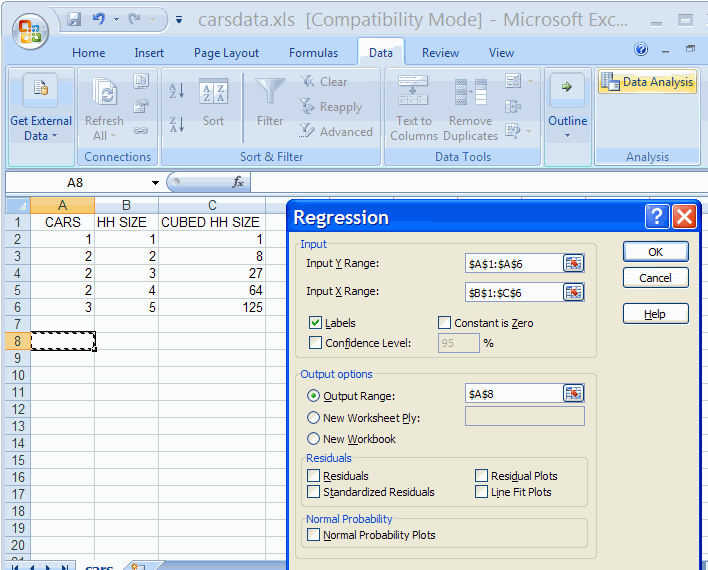

In the PivotTable Field List box, scroll down and find the “Processor(_Total)\% Processor Time” counter, and click and drag it to the “Values” pane below.Į. In this example, we are going to first analyze the total processor time. In the PivotTable Field List box, click and drag “DateTime” down to the “Axis Fields (Categories)” pane below.ĭ. The Pivot Chart dialog “auto-magically” selects the correct Table/Range of data to analyze. Switch to the “Insert” ribbon, click on the down-arrow on the “Pivot Table” button, and select “Pivot Chart.”ī. Note that I have found using the Excel macro functionality for steps beyond this step unworkable.Ī.
#How to use data analysis in excel 2010 how to
Please refer to the Excel help for how to do this. using an Excel macro, by having Excel record your actions, and then you will assign a keyboard shortcut to your macro. csv file you will analyze, so I recommend that you automate steps a. Press Ctrl + Home to get the focus back on the A1 cell.į. On the Number tab, select the “Date” category and the “3/14/01 1:30 PM” type, and click OK.Į. Highlight the entire “A” column by clicking on the column header, then right-click anywhere in the column –> Format Cells…ĭ. Remove row 2 by right clicking on the row number –> “Delete.” This row, containing the first row of data, is typically a junk row.Ĭ. Change the text in the A1 cell from “(PDH-CSV 4.0…” to simply “DateTime.”ī.

csv extension should already be associated, so the file will automatically open in Excel.Ī. If this is the case, right-click on an open area of the Pivot Table chart and select “Change Chart Type.” Select the left-most line chart type (the most basic line chart), and click the option at the bottom to make that your default type. Note that in the process below, Excel may not by default select the line chart type you prefer, for example one with data points displayed. The screen shots and steps below are for Excel 2007, but they should also work for Excel 2010. Finally, we will demonstrate how to use date filters to drill deeper into specific time ranges, in order to view the graph data in greater detail. csv file, apply a few formatting changes, and use the very handy Pivot Chart functionality built into Excel to graph your counters.
#How to use data analysis in excel 2010 windows
This article assumes that you have already collected whatever SQL or Windows or other performance counters you wish to analyze, and that you have captured them to counter logs in the form of one or more comma-delimited.

Here is an explanation of how to easily use Excel 2007 and Excel 2010 to analyze performance captures saved to counter logs via Windows’ built-in perfmon utility.


 0 kommentar(er)
0 kommentar(er)
